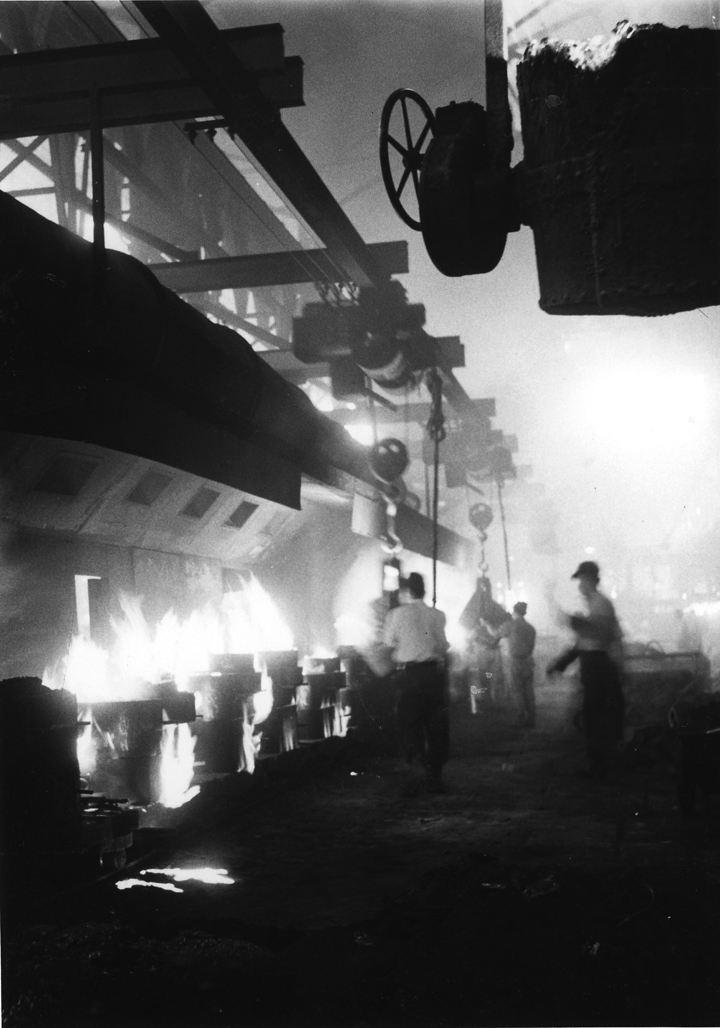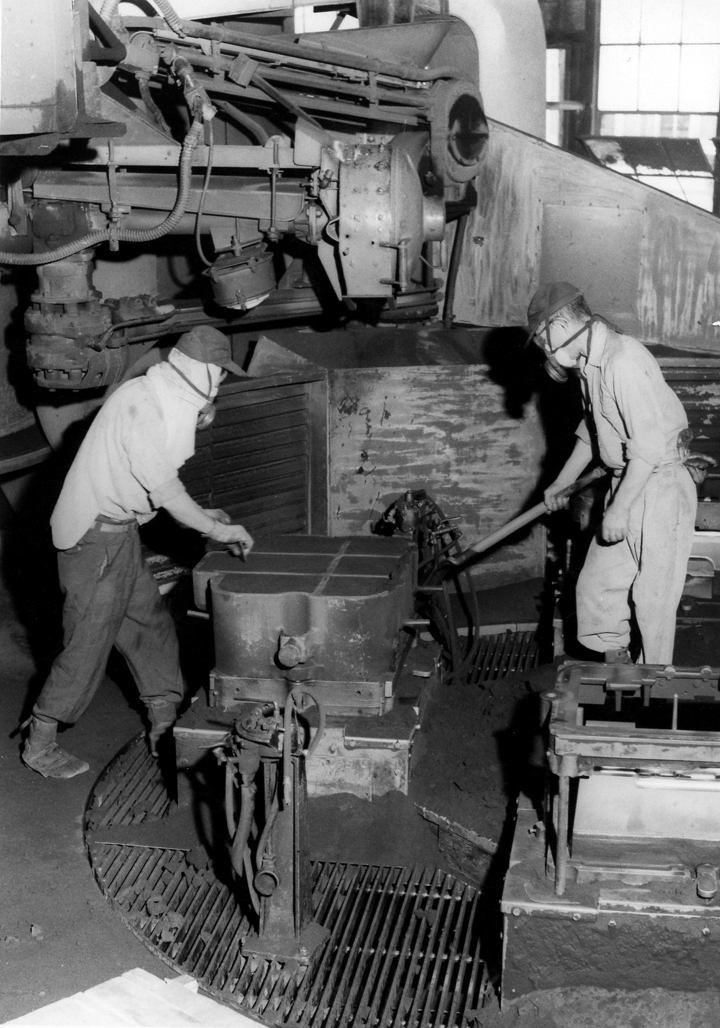Section 9. Preparations for Mass Production and Mass Sales
Item 6. Production Capacity Increase with the Goal of Reaching 10,000 Vehicles/Month
Casting process
In the casting plants, Toyota installed a mold conveyor line for casting cylinder blocks in 1955. The conveyor line linked together the various steps involved, such as the mold-making step for making molds out of sand, the pouring step for pouring molten cast iron into the mold, and the mold-removing step for extracting the cast product from the sand mold, and made it possible to manage them on a single line.
Next, a 7-ton cupola furnace for melting cast iron was installed, first at the No. 1 Special Foundry in November 1957, then at the Malleable Casting Foundry in December of the same year, and then at the Ordinary Casting Foundry in July 1958. In January 1958, a tunnel-type continuous annealing furnace began operating with a monthly production capacity of 600 tons, and the aforementioned mold conveyor line was also extended and a sand slinger (a molding machine that makes molds by feeding and compacting molding sand) was added. A shot blast for removing molding sand adhered to cast products was also installed, enhancing the back-end processing capability for casting.
In terms of new casting technologies, the shell molding method that forms molds by mixing and baking silica sand with a phenol resin was introduced in 1954. Then in 1957, Toyota used this manufacturing method to develop an internally made shell machine and began using it to make cores for transmission cases.



